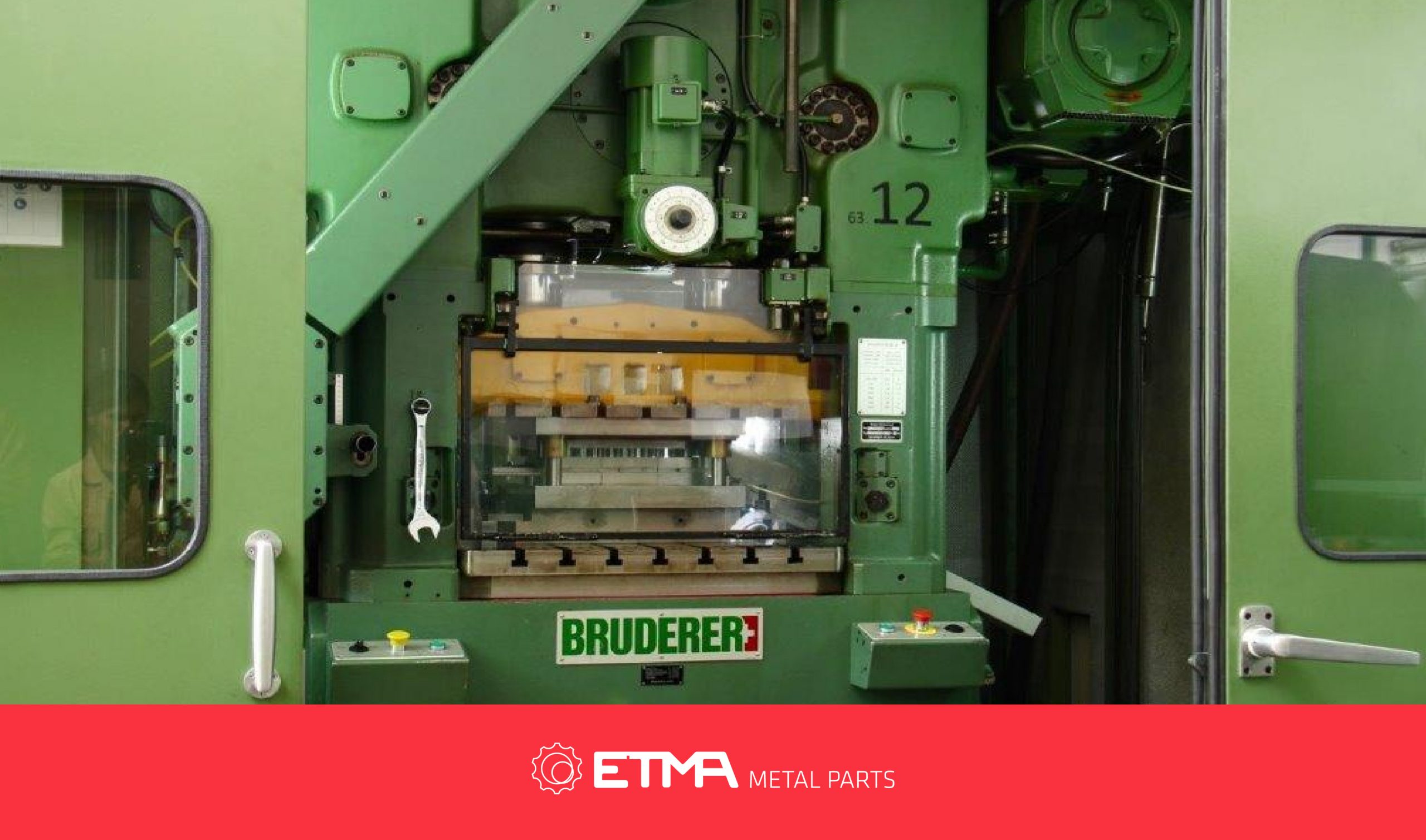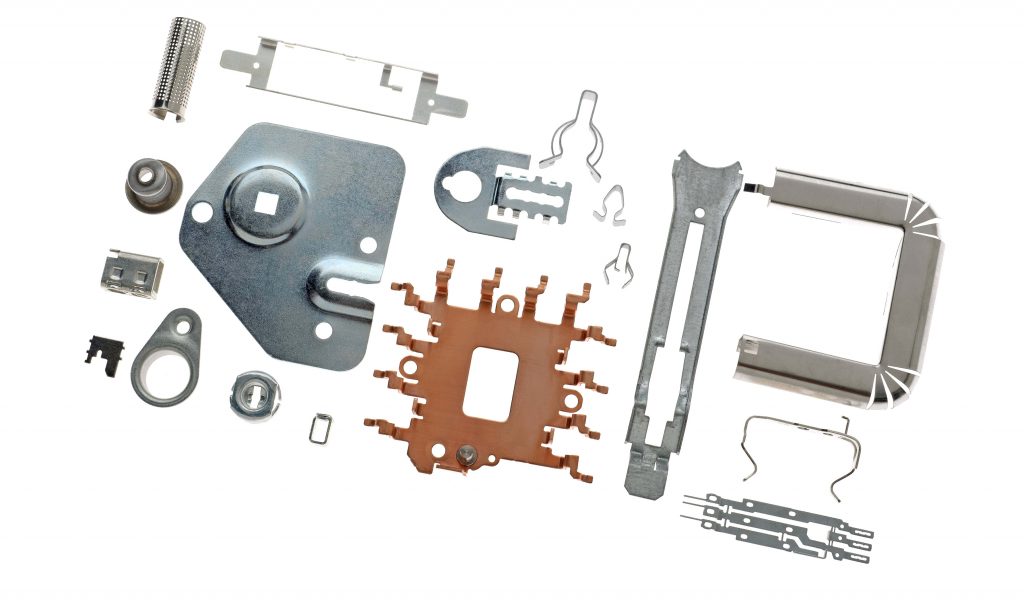
Stamping is one of the core production processes ETMA offers to its clients in terms of the manufacture of components. This is the reason why we have invited Miguel Queirós, an engineer that works as a sales technician at ETMA, to participate in this and the following articles, in order to tell us about this production process, its advantages for the industry, types of stamping and related machinery and technology.
In order to meet the project requirements of its clients, ETMA has created an exclusive system that customises the offer of its services. This system is the 10 Integrated Production Processes, which includes the Stamping process. Tell us about this production process.
Miguel Queirós – This is a manufacturing technology through which metal sheets are transformed into parts for several cutting or plastic deformation operations. In many cases, this plastic deformation goes beyond simple folding, so the stamped parts are, many times, hard to achieve in simpler processes, such as bending.
In order to achieve the intended final geometry, the stamping process sometimes entails very extensive plastic deformation, which is not located in the material. The material suffers tensile, compressive and bending stresses which supersedes its elastic limit, and which may cause shear stresses that arise from the cutting operations.
What types of parts can be obtained through this process?
MQ – Among the types of parts obtained through stamping, we can find large parts, such as car door panels, medium parts, such as kitchen utensils and beverage cans, or small parts, such as spacers, eyelets or electrical connectors.
And what industries use stamped parts?
MQ – There are several industries using these types of parts. For example, for the electrical industry, we produce plug holes for sockets, earth pins, connectors, or more complex sets, such as terminals. For the automotive industry, we produce parts for the injection system, supports for several components in the engine compartment, in the brake compartment, among others. For the home appliance industry, we produce, for example, elements for the temperature regulator of coffee machines, several parts for food processors, etc. For the moped industry, we produce, for example, among numerous components, stamped parts for helmets.
And are there specific reasons for these industries to use the stamping process?
MQ – There are many reasons. Among them, the following stand out:
- Low manufacturing costs per part, due to possible high cadences;
- Applicability to large-scale production, with a production series that can reach hundreds of thousands of units;
- Excellent surface finish of the parts;
- Durability and resistance of the parts;
- Low quality control costs;
- Ability to shape a wide range of materials.
Taking a step back, which are the phases of a stamping process in the manufacture of a metal part?
MQ – The main principle has the following order:
- The material is placed and trapped between the matrix and the hold-down clamp;
- The matrix has the negative shape, total or partial, of the geometry we intend to imprint on the metal sheet;
- The plastic deformation occurs when the punch, the conformation element with positive geometry, shapes the material against the matrix;
- The hold-down clamp function is to prevent the formation of folds when deformation is multi-directional.
There are certainly important aspects that must be considered during this process…
MQ – Yes, indeed. There are several important aspects that must be safeguarded, starting with the design phase of the parts, in order to ensure the efficiency and efficacy of the production process. Which means:
Material conformability:
- The properties of the selected material must be appropriate to the complexity of the requirements and stresses the material will suffer during its processing;
- Particularly, its ability to adapt to plastic deformation should be considered, by choosing materials with suitable stretching for stamping;
- The vast experience of ETMA technicians is, in this area, an added value, since they can help the client select the material that will ensure, simultaneously, the intended performance and the necessary manufacturing capability in economically advantageous productions.
Design and manufacture of the tool:
- In the stamping process, the tool is what ensures that the final shape, dimensions and tolerances are achieved;
- The order of the operations, the geometry of the active elements and the materials selected for its manufacture are key to ensure, not only the quality of the final product, but also the necessary reliability of the tool to minimise the stoppages for maintenance;
- Once again, the vast experience of ETMA technicians ensure that the architecture and materials used in the tool are the most suitable in each case.
We end this first article highlighting that, at ETMA, the demand for tailored solutions, that comply with the requirements of each client, involves the development (comprised of engineers and specialised technicians) and sales teams, who share knowledge and experience with the client, resulting in synergies that are mutually beneficial.
The following topics will be addressed in the next articles:
Progressive stamping and Transfer stamping
Design and manufacture of tools
In the meantime, if you are interested in learning more and, eventually, talking to us about a project, please do not hesitate to contact us.




